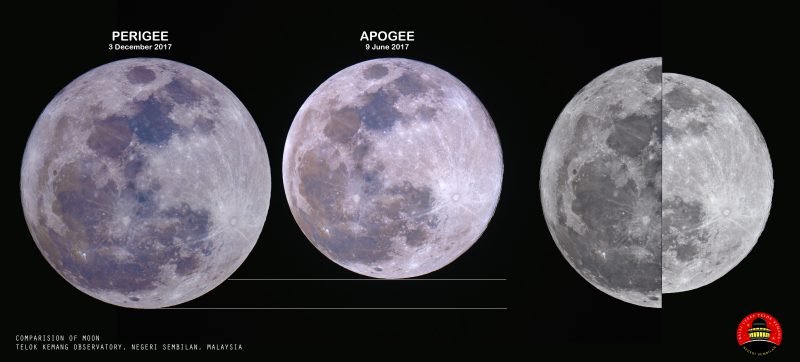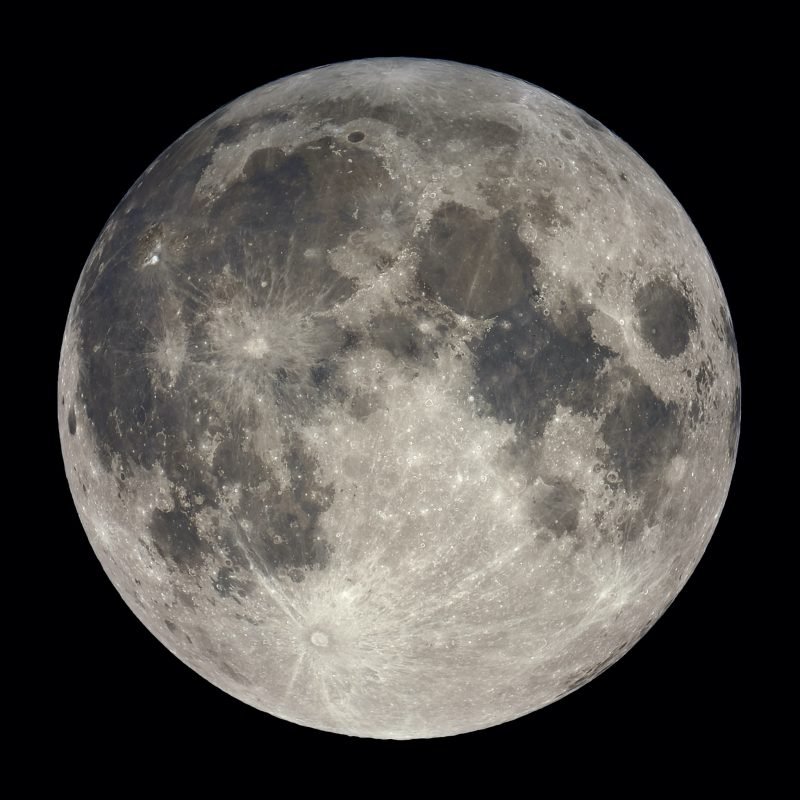The moon on Wednesday may still seem huge, but for a different reason.
As the nights grow longer and the stars twinkle overhead, astronomy enthusiasts and curious sky gazers alike are in for a treat this week. August 2023 will grace us with a celestial spectacle that promises to leave us in awe: the rare Super Blue Moon, the largest full moon of the year.A Super Blue Moon is a captivating phenomenon that occurs when three factors align perfectly: the moon is at its closest point to Earth in its elliptical orbit (known as the perigee), it coincides with a full moon phase, and it is the second full moon of the month. This triple convergence results in a lunar display that’s not only visually stunning but also scientifically intriguing.
On the night of this event, the moon will appear larger and brighter than usual, a phenomenon known as a “supermoon.” While supermoons are relatively common, the added element of the “blue moon” status makes this occurrence particularly special. A blue moon refers to the second full moon in a single calendar month, a relatively infrequent event that happens about once every 2 to 3 years. The term “blue” doesn’t actually refer to the moon’s color, but rather to its rarity.What makes this Super Blue Moon in August 2023 even more enchanting is its potential to cast an almost magical glow upon the landscape. The moon’s increased proximity to Earth enhances the reflection of sunlight, bathing the night in an ethereal radiance. Whether you’re a professional astronomer armed with telescopes and cameras or simply someone who enjoys gazing at the night sky, this event promises to provide an excellent opportunity for observation and reflection.

From a scientific perspective, the Super Blue Moon provides a valuable chance to study the moon’s surface features and characteristics with heightened clarity. As the moon comes closer to Earth, details such as craters, ridges, and valleys become more pronounced, making it an ideal occasion for amateur astronomers to delve into lunar exploration.However, the awe-inspiring nature of the Super Blue Moon extends beyond its scientific implications. Throughout history, the moon has held a special place in human culture, inspiring myths, art, and even poetry. Its majestic presence in the night sky has sparked imagination and wonder for generations, and events like the Super Blue Moon continue to capture our collective fascination.
To catch a glimpse of this celestial wonder, skywatchers should mark their calendars for the specific date of the event. As with any skywatching endeavor, it’s recommended to find a location with minimal light pollution for the best viewing experience. Binoculars or a telescope can enhance the view even further, allowing you to explore the moon’s surface in exquisite detail.As August’s rare Super Blue Moon graces the night sky this week, it’s a reminder of the beauty and grandeur of the cosmos that envelops us. This celestial event encourages us to pause, look up, and appreciate the mysteries that unfold above us, while also reminding us of our connection to the universe and the wonder that continues to inspire humanity’s journey of discovery.

As the nights grow longer and the stars twinkle overhead, astronomy enthusiasts and curious sky gazers alike are in for a treat this week. August 2023 will grace us with a celestial spectacle that promises to leave us in awe: the rare Super Blue Moon, the largest full moon of the year.A Super Blue Moon is a captivating phenomenon that occurs when three factors align perfectly: the moon is at its closest point to Earth in its elliptical orbit (known as the perigee), it coincides with a full moon phase, and it is the second full moon of the month. This triple convergence results in a lunar display that’s not only visually stunning but also scientifically intriguing.
On the night of this event, the moon will appear larger and brighter than usual, a phenomenon known as a “supermoon.” While supermoons are relatively common, the added element of the “blue moon” status makes this occurrence particularly special. A blue moon refers to the second full moon in a single calendar month, a relatively infrequent event that happens about once every 2 to 3 years. The term “blue” doesn’t actually refer to the moon’s color, but rather to its rarity.What makes this Super Blue Moon in August 2023 even more enchanting is its potential to cast an almost magical glow upon the landscape. The moon’s increased proximity to Earth enhances the reflection of sunlight, bathing the night in an ethereal radiance. Whether you’re a professional astronomer armed with telescopes and cameras or simply someone who enjoys gazing at the night sky, this event promises to provide an excellent opportunity for observation and reflection.

From a scientific perspective, the Super Blue Moon provides a valuable chance to study the moon’s surface features and characteristics with heightened clarity. As the moon comes closer to Earth, details such as craters, ridges, and valleys become more pronounced, making it an ideal occasion for amateur astronomers to delve into lunar exploration.However, the awe-inspiring nature of the Super Blue Moon extends beyond its scientific implications. Throughout history, the moon has held a special place in human culture, inspiring myths, art, and even poetry. Its majestic presence in the night sky has sparked imagination and wonder for generations, and events like the Super Blue Moon continue to capture our collective fascination.
To catch a glimpse of this celestial wonder, skywatchers should mark their calendars for the specific date of the event. As with any skywatching endeavor, it’s recommended to find a location with minimal light pollution for the best viewing experience. Binoculars or a telescope can enhance the view even further, allowing you to explore the moon’s surface in exquisite detail.As August’s rare Super Blue Moon graces the night sky this week, it’s a reminder of the beauty and grandeur of the cosmos that envelops us. This celestial event encourages us to pause, look up, and appreciate the mysteries that unfold above us, while also reminding us of our connection to the universe and the wonder that continues to inspire humanity’s journey of discovery.




































